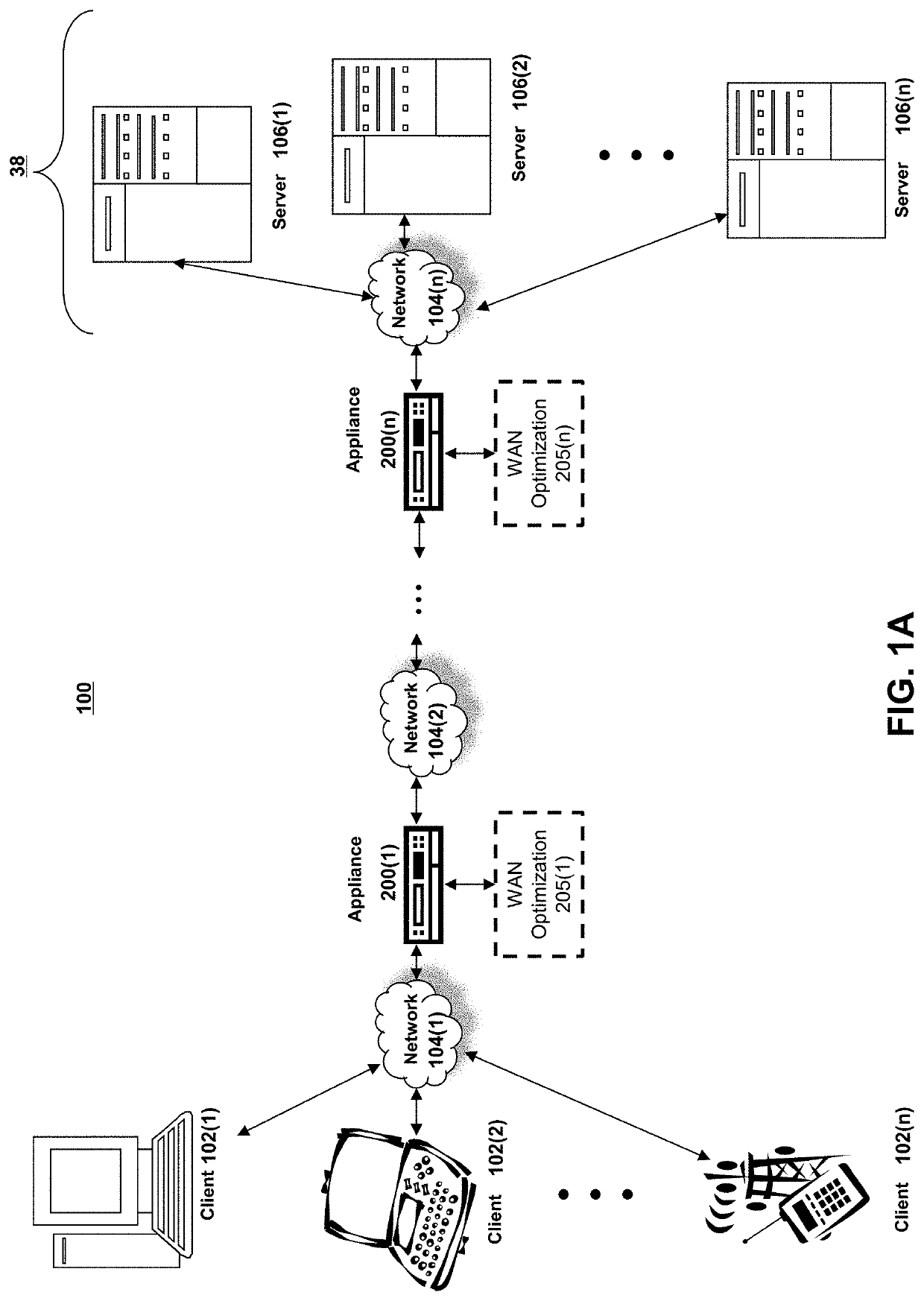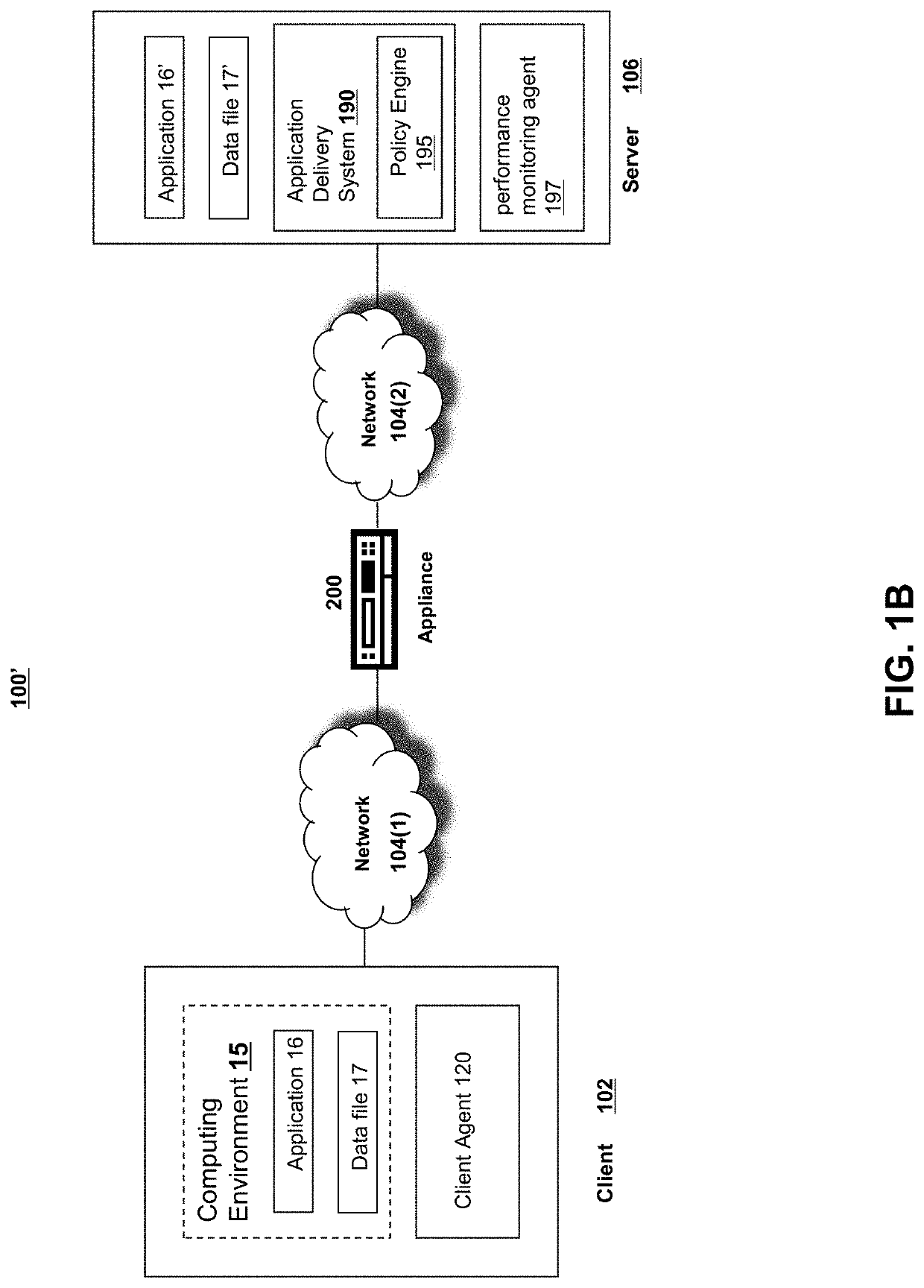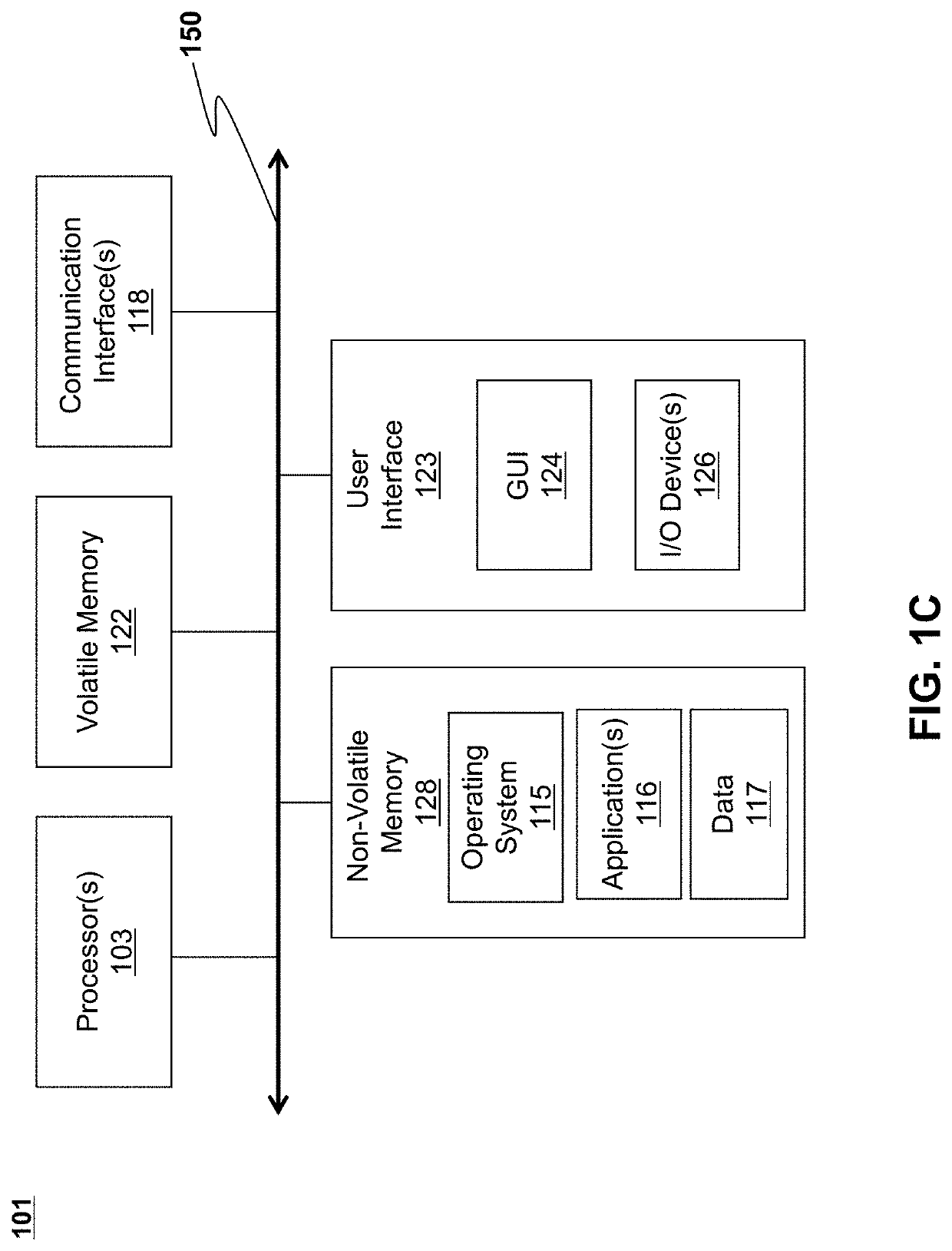Method to save computational resources by detecting encrypted payload
a payload and computational resource technology, applied in the field of communication network packets, can solve the problems of large time expenditure in accessing and processing the contents of packets, and achieve the effect of reducing computing resources and time expenditure in processing packets, and adequate level of security
- Summary
- Abstract
- Description
- Claims
- Application Information
AI Technical Summary
Benefits of technology
Problems solved by technology
Method used
Image
Examples
Embodiment Construction
[0033]For purposes of reading the description of the various embodiments below, the following descriptions of the sections of the specification and their respective contents may be helpful:
[0034]Section A describes a network environment and computing environment which may be useful for practicing embodiments described herein;
[0035]Section B describes embodiments of systems and methods for delivering a computing environment to a remote user;
[0036]Section C describes embodiments of systems and methods for virtualizing an application delivery controller;
[0037]Section D describes embodiments of systems and methods for providing a clustered appliance architecture environment; and
[0038]Section E describes embodiments of systems and methods for using tunnels based on a security level of the communications.
A. Network and Computing Environment
[0039]Referring to FIG. 1A, an illustrative network environment 100 is depicted. Network environment 100 may include one or more clients 102(1)-102(n) ...
PUM
 Login to View More
Login to View More Abstract
Description
Claims
Application Information
 Login to View More
Login to View More - R&D
- Intellectual Property
- Life Sciences
- Materials
- Tech Scout
- Unparalleled Data Quality
- Higher Quality Content
- 60% Fewer Hallucinations
Browse by: Latest US Patents, China's latest patents, Technical Efficacy Thesaurus, Application Domain, Technology Topic, Popular Technical Reports.
© 2025 PatSnap. All rights reserved.Legal|Privacy policy|Modern Slavery Act Transparency Statement|Sitemap|About US| Contact US: help@patsnap.com



